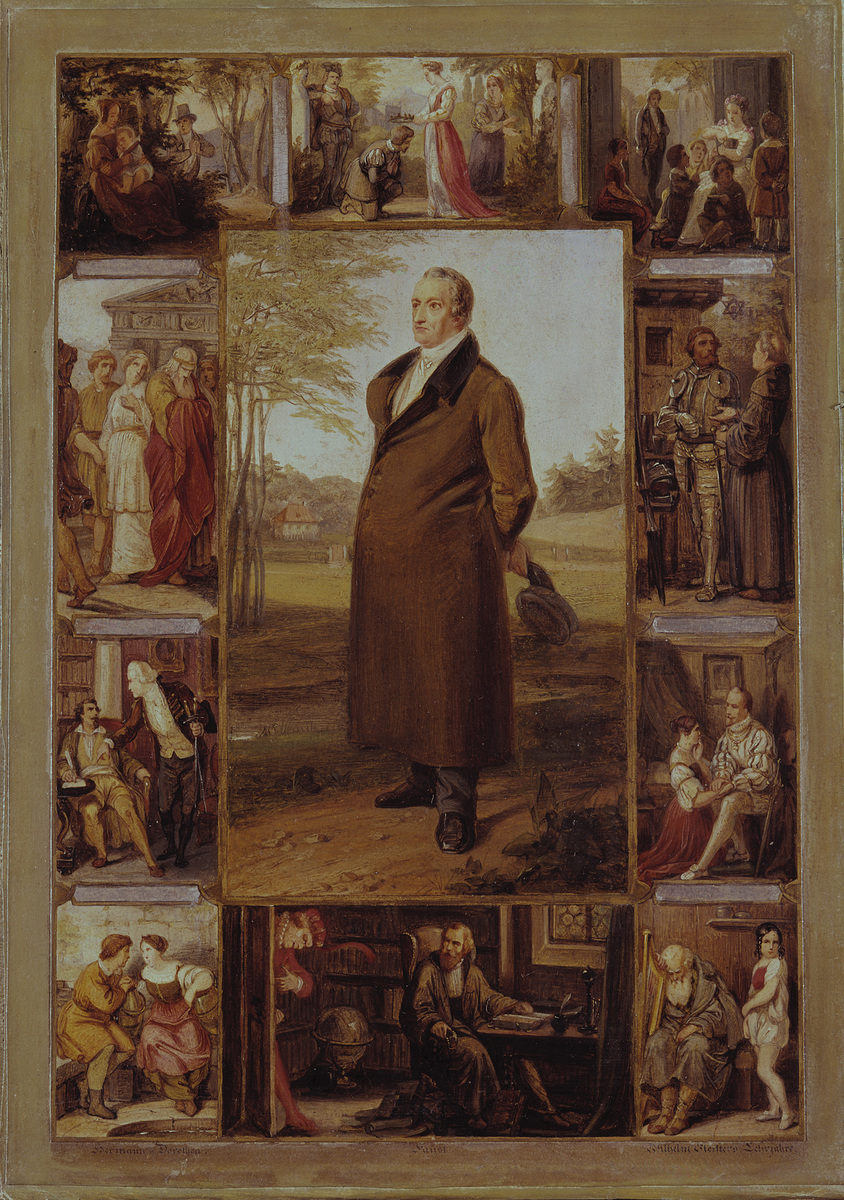Abstract
Many of the works portrayed here would have enjoyed widespread
recognition, particularly among Germany's educated public and
theatergoers. The painting’s border features scenes (clockwise, from top
left) from Elective Affinities,
Tasso,
The Sorrows of Young Werther,
Götz von Berlichingen (Iron Hand),
Egmont,
Wilhelm Meister’s Apprenticeship,
Faust,
Hermann and Dorothea,
Clavigo, and
Iphigenia in Tauris. Spanning the
poet’s entire life, some of these works also exemplify the literary
movements with which they are associated: for example,
Götz von Berlichingen, a drama about
a rebellious medieval knight (1773), represents the
Sturm und Drang movement, whereas the
verse drama Hermann and Dorothea
(1797) exemplifies the so-called Weimar classicism. Others, such as
The Sorrows of Young Werther (1774),
the epistolary novel about a sentimental hero who eventually commits
suicide, left their mark on generations of readers;
Wilhelm Meister’s Apprenticeship
(1796) became the archetypical
Bildungsroman of the German educated
bourgeoisie; and Goethe’s most famous drama,
Faust (Part One: 1808; Part Two:
posthumously, 1832), examines the character of a scholar who tragically
probes the complexity of human existence in a pact with the devil.
Painting by Moritz Daniel Oppenheim (1800–1882), c. 1835.
